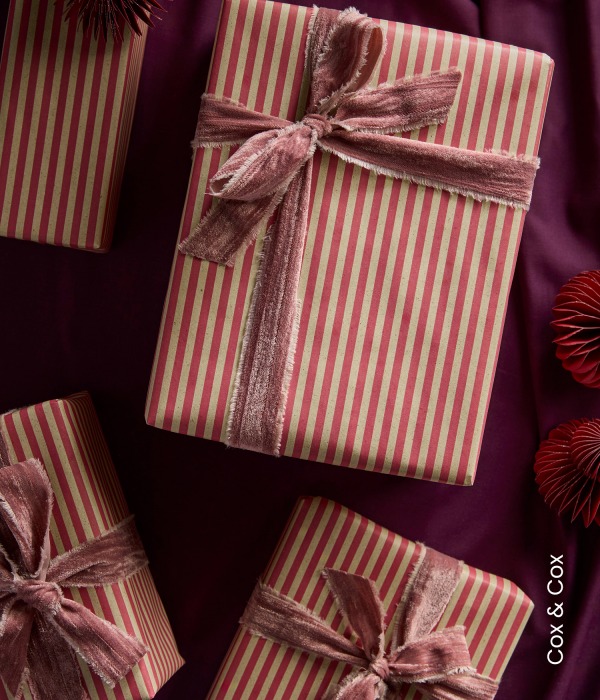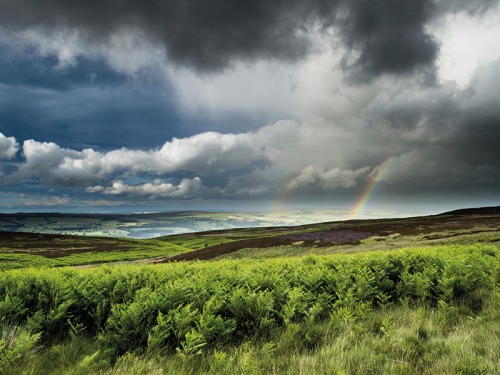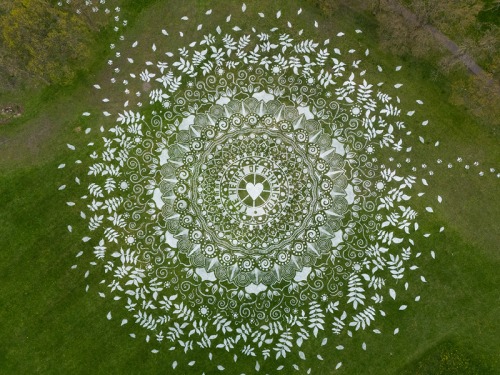Go Behind the Scenes of 28 Years Later
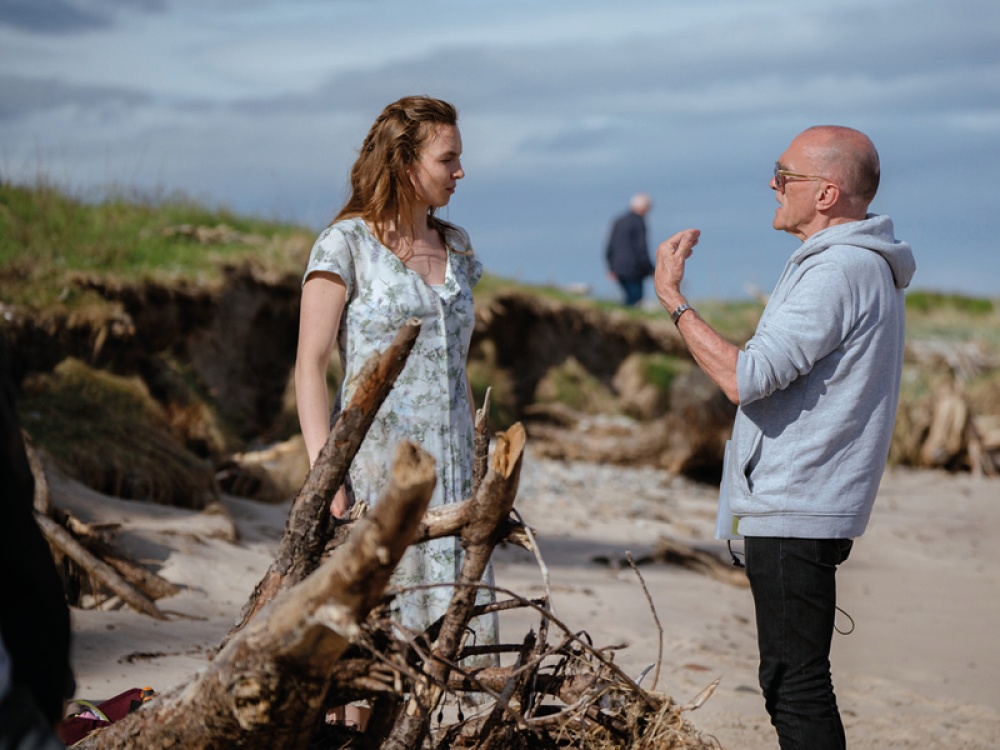
The excitement for Danny Boyle's 28 Years Later is infectious (pun absolutely intended)
Academy Award-winning director Danny Boyle and Academy Award-nominated writer Alex Garland have reunited for 28 Years Later, transporting viewers back to the 28 Days Later universe almost three decades after the ‘rage’ virus escaped a biological weapons laboratory, in the original film which starred Cillian Murphy. Jodie Comer, Ralph Fiennes and Aaron Taylor-Johnson star alongside young rising star Alfie Williams from Gateshead.
Rural locations were key to this new project. Camilla Stephenson was supervising location manager and was involved in these discussions with Danny and Alex from the get-go. ‘Danny will shoot in six places, if he possibly can, to represent one place,’ Camilla says. ‘So we had very big discussions right at the beginning about what the country will look like, 28 years after the main infection.’
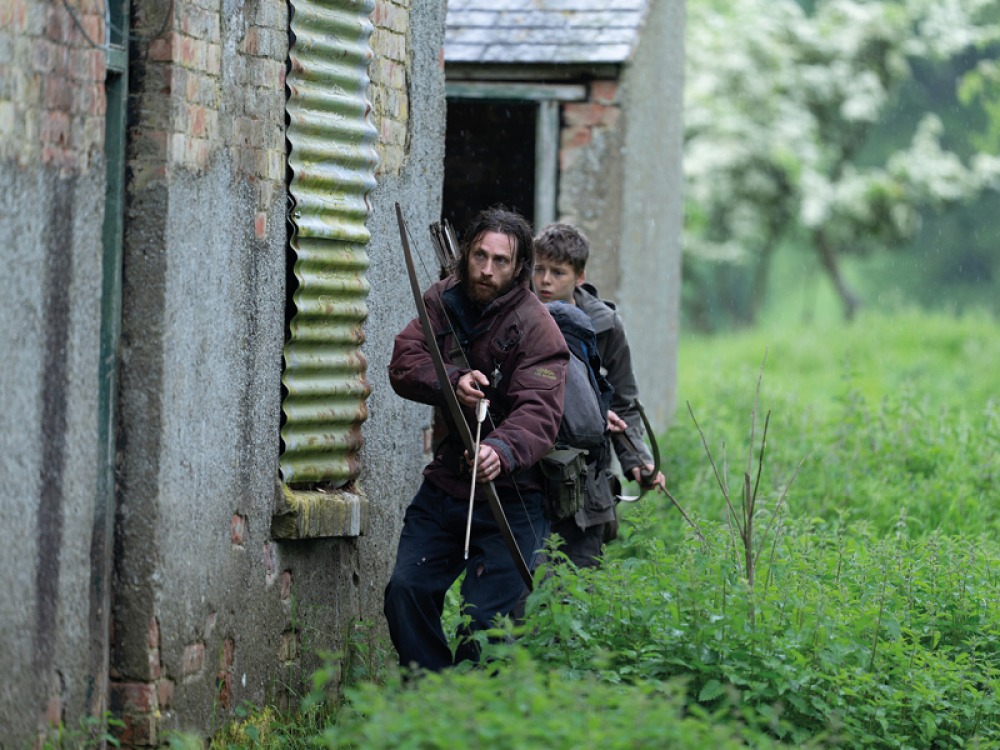
Survivors live on a small island connected to the mainland by a single, heavily-defended causeway. Sound familiar? These scenes were shot on location on Holy Island. ‘It’s an island that in theory you could protect yourself on,’ Camilla says. ‘But we did some movie magic. If you’re on Holy Island you can actually, at low tide, walk from the mainland across to the island (you famously can on the Pilgrims’ Way) but we wanted to make an island where there’s always water surrounding it and only the causeway is revealed at low tide, so we went down south to another island for its causeway. That was our starting point. The people on Holy Island were cautious but we spent a lot of time working with them and proving ourselves, then some of the community featured in the film.’
One of the group leaves the island for a mission on the mainland and so Camilla and her team began searching for landscapes that could have believably been left alone for 28 years. ‘Everything is overgrown or has gone back to nature,’ she explains. ‘We were surprised and delighted that it wasn’t just moorlands that we found, which didn’t really suit what we wanted, we actually discovered some stunning places that are a little bit off the beaten track.’
Many of these locations were in Northumberland, but the crew also found some hidden gems in County Durham. ‘We found a beautiful wreck of a house that you see in the film in a gorgeous valley near Consett,’ says Camilla, and it’s here that the crew also found a perfect standalone tree. ‘We saw it and approached the farmer and asked if we could film on their field. It was one of those really lucky things that looks just brilliant.’
More scenes were shot near St Cuthbert's Cave near Lowick. ‘You don’t see a lot of the cave but when they come off the island and climb the hill and stand next to the rocks, that’s just above it,’ says Camilla. ‘We loved it because we happened to go there for another reason altogether and we clambered up above it and said “wow, when you’re stood here, you can see Holy Island”. It was just brilliant. There’s nothing interrupting your view and nothing modern, which was great because we were determined to use as little visual effects as possible.’
Another great find was spotted in Kielder Forest. ‘There’s a little modern bridge (you’ll see it several times in the film) and they were about to repair it and we said “please don’t – in fact, can we make it look much more broken?”,’ Camilla laughs. ‘We liked that it wasn’t cute or medieval looking. We were worried the film could look medieval if we weren’t careful because we were taking away all modernity and our characters were carrying around bows and arrows. If we weren’t careful it could look like we were doing a contemporary film. There’s beautiful woods and incredible moss hills that the guys run through – that’s all done at Kielder too. At Kielder Reservoir we were under the reservoir for a very scary moment with the Swedish soldiers.’
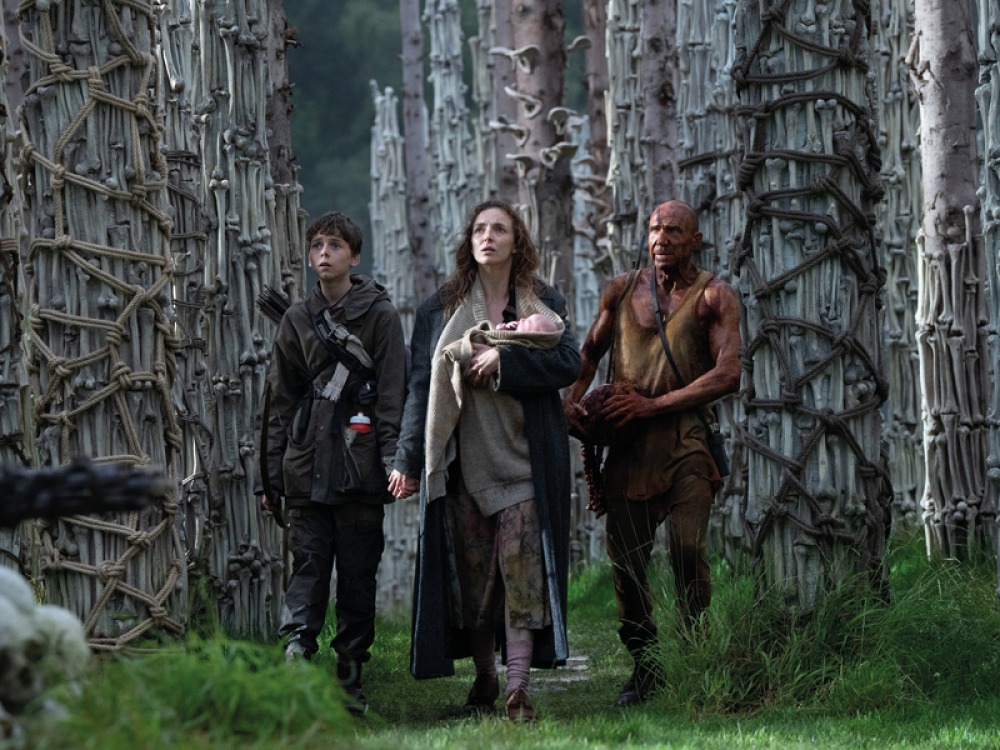
Beautiful scenes featuring rapeseed fields were filmed in the North East too, and on many occasions local farmers went above and beyond to support the crew in getting the perfect shots on their schedule. ‘One of our favourite places we filmed in was a beautiful village hall, Jubilee Hall in Newton-on-the-Moor, which they allowed us to transform. We walked in and did the classic thing of telling them it was absolutely perfect then changed it,’ Camilla laughs. ‘We repainted it. They were absolutely fantastic.
‘We filmed at Sycamore Gap. Everyone notices that in the film and people gasp. We did it to honour Sycamore Gap, and filmed it without the tree and then the magic of digital has put the tree back in because it wouldn’t have been cut down in our parallel world. Anything that existed in the early 2000s is still standing in our film.’ Other scenes were filmed at a disused petrol station in Knowesgate. ‘We loved the setting and the gentleman who owns it allowed us to create a “Happy Eater” which is now derelict,’ explains Camilla. ‘We had a reference from America of a petrol station that says “Shell” but the S has dropped off so it says “hell”.’
Hesleyside in the Northumberland National Park was the backdrop for woodland scenes in the film. ‘It really looks beautiful,’ Camilla says. ‘They probably didn’t appreciate at the time that what we were doing was lots of little moments which connect up to lots of other scenes. They couldn’t have been more generous, kind and welcoming with anything we asked for including filming at night, adding smoke effects and taking over their accommodation. Anna [Charlton] was amazing.’
Anna runs the Hesleyside Huts luxury glamping site. Her first date with her husband was to see 28 Days Later in the cinema and she describes herself as a ‘super fan’, so when Hesleyside was chosen as a filming location, you can imagine her excitement. ‘We’ve done some filming here before for Vera but certainly not a feature-length film,’ she says. ‘This was about the natural wilderness around us because we’ve got some very ancient woods and some of them, it’s fair to say, have been slightly neglected I suppose. Trees had fallen down in [Storm] Arwen and nature had taken over. When Alfie’s doing a lot of the archery and killing some of the infected – that was filmed here. Some of the night shots too. I was lucky enough to see some of the night filming and that is going to be terrifying when you watch it!
‘It was quite surreal at times because we had Aaron Taylor-Johnson staying in one of our shepherd’s huts, the most charming Academy Award-winning team around the dinner table and you’d see an infected walking past the kitchen window with a cup of tea and you’d be like “is this really happening?”. It was a huge operation with up to 100 cast and crew at one point in the woods. Watching the team, it was like a huge orchestra all working together with Danny as the conductor. When I’m on a dog walk now I think “gosh, that’s where this happened”… you’d never have known! It’s lovely shining a spotlight on our little part of the world and it’s given us a real confidence to think actually we’ve got a really unique offer for film makers.’
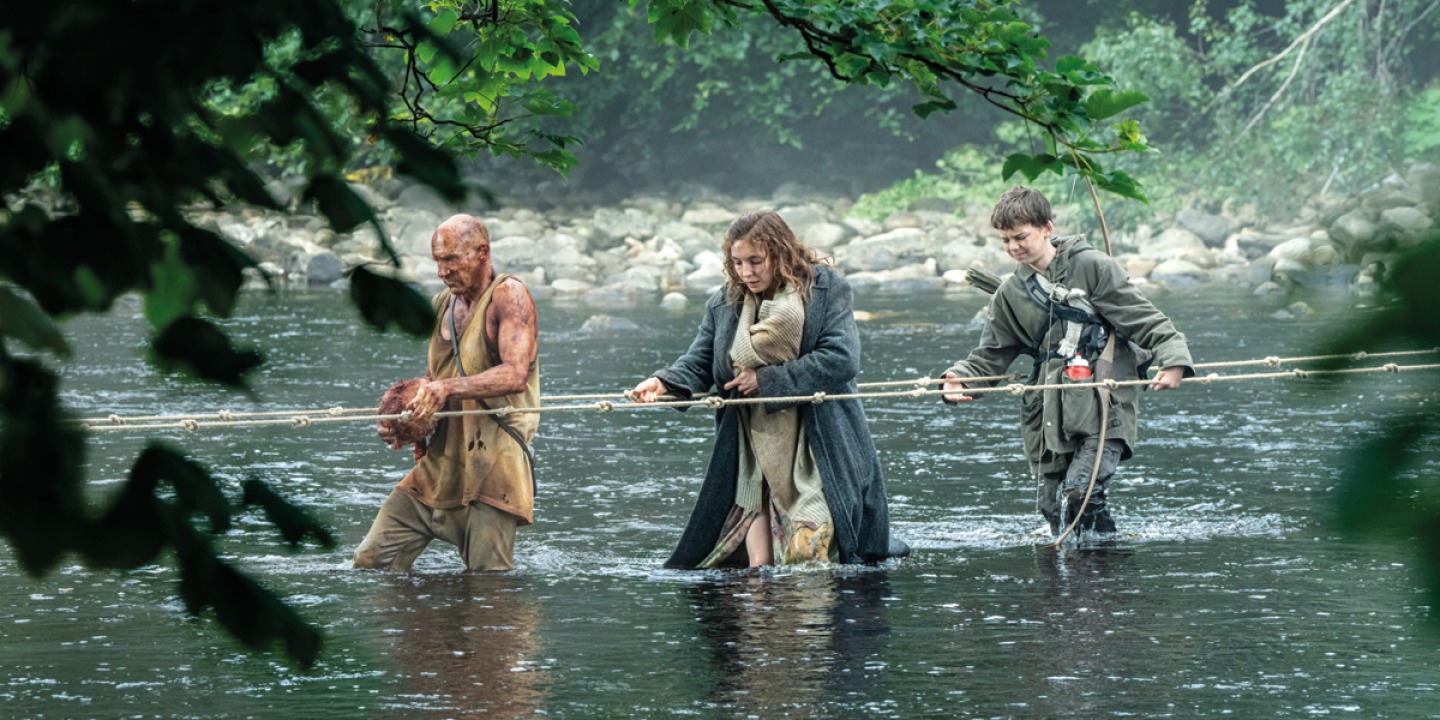
Anna is passionate about bringing people into the National Park to showcase the wilderness. ‘It’s really important to connect with that – this is a step further I hope,’ she says. ‘The thing I’m most excited about is seeing our location on the big screen through this unique filmography they’ve developed. It’s all on iPhone 15s! You think, how is that going to happen? But I’ve seen how they did it, and it is incredible! It’s not just one iPhone. At times there’s lots of iPhones on an incredible arcing rig which means you’ll see the woods but you’ll see it through your peripheral vision too. You’ll see things from the corner of your eye. I think that’s going to be a new experience.’
Camilla is proud and thankful for the support both cast and crew received across the region throughout filming. ‘When you work with Danny, it’s not like working with anybody else. It’s very creative and collaborative and he wants flexibility,’ she says. ‘Everybody everywhere we went in the North East could not have been nicer or kinder – and excited, even beforehand! Everyone was hoping he would create an interesting vision. Although it’s a horror film, and might not be to everyone’s tastes, and it’s strange and quirky, it is beautiful, it’s all shot on location – and we should be very proud. In this film, everything that was shot bar two tiny moments, are in the film. Danny really knew what he wanted and really liked what he got. We’re very proud to show parts of the North East in a way that they might not normally be seen.’

